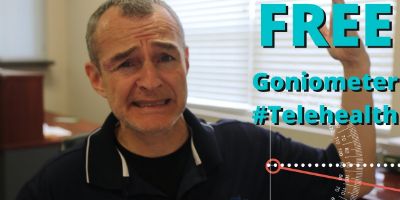
25 Most Common Outpatient Physical Therapy Abbreviations in 2022
| AAROM – Active Assisted Range of Motion |
| AROM – Active Range of Motion |
| CLOF – Current Level of Function |
| CPM – Continuous Passive Motion |
| DPT – Doctor of Physical Therapy |
| ER – External Rotation |
| GLOF – Goal Level of Function |
| IR – Internal Rotation |
| ITB – Iliotibial Band |
| L – Left |
| OT – Occupational Therapist |
| PLOF – Prior Level of Function |
| POC – Plan of Care |
| PROM – Passive Range of Motion |
| PT – Physical Therapist |
| PWB – Partial Weight Bearing |
| R – Right |
| RC – Rotator Cuff |
| ROM – Range of Motion |
| THA – Total Hip Arthroplasty |
| THR – Total Hip Replacement |
| TKA – Total Knee Arthroplasty |
| TKR – Total Knee Replacement |
| UBE – Upper Body Ergometer |
| WBAT – Weight Bearing As Tolerated |
| WNL – Within Normal Limits |
Should You Use Physical Therapy Abbreviations in Documentation
These abbreviations are often used in outpatient physical therapy clinics. While abbreviations are handy and safe time, with electronic documentation being more accessible than ever, there is far less need to use physical therapy abbreviations.
If your physical therapy practice does decide to use these abbreviations or any other abbreviations, you should always keep an updated list of your abbreviations in case a third-party payer requests documentation.
How to create a superbill for cash based therapy, out of network claims Office Ally Practice Mate
The CMS 1500 form is the gold standard for superbills. If you are giving cash based clients a superbill or helping clients submit out of network claims this tutorial will walk you through the entire process from start to finish for using a FREE Practice Mate account to create and print a CMS 1500.
Medicare Physical Therapy Claim and Reimbursement Analysis – How to create a profitable practice
Medicare reimbursement for physical therapy has been on the decline for several years now and with the proposed reductions coming in the next year physical therapy clinic owners are looking for new business models. The way it has always been done isn’t going to bring you success in your physical therapy practice moving forward.
How much does medicare part b pay for physical therapy
If you want to learn how to look up the Medicare CMS Physician Fee Schedule for 2020 and specifically for physical therapy, occupational therapy, or speech language pathology, WATCH THIS VIDEO.
Telehealth – Using ScreenCapture, Canva, and A Digital Goniometer To Measure ROM (FREE)
Telehealth for physical and occupational therapy has been growing in popularity lately. Along with this growth, therapists are looking for new and easy to use tools. This simple goniometer can be added to your screen capture to measure joint range of motion.
Medicare Guidelines for Billing Therapeutic Exercise 97110 PT, OT in 2020
“Many therapeutic exercises may require the unique skills of a therapist to evaluate the patient’s abilities, design the program, and instruct the patient or caregiver in safe completion of the special technique. However, after the teaching has been successfully completed, repetition of the exercise, and monitoring for the completion of the task, in the absence of additional skilled care, is non-covered. For example, as part of the initial therapy program following total knee arthroplasty (TKA), a patient may start a session on the exercise bike to begin gentle range of motion activity. Initially the patient requires skilled progression in the program from pedal-rocks, building to full revolutions, perhaps assessing and varying the
seat height and resistance along the way. Once the patient is able to safely exercise on the bike, no longer requiring frequent assessment and progression, even if set up is required, the bike now becomes an “independent” program and is no longer covered by Medicare.”






